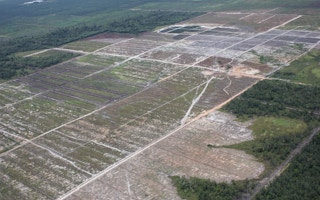One of the most profitable global criminal enterprises is one you might not expect. It is crimes like illegal fishing and logging, waste trafficking, and trade in wildlife. And the financial sector is reaping huge rewards from these assaults against the natural environment on which we depend.
It is difficult to overstate the damage environmental crimes cause. By destroying ecosystems and depleting natural assets, such crimes destroy livelihoods, undermine governing institutions, and impede our ability to address climate change.
As a new report by Finance for Biodiversity (F4B) points out, such crimes generate up to US$280 billion each year, decreasing tax revenues by some US$30 billion per year, with poorer, environmentally rich countries losing the most. Financial institutions sustain the incentive – often unwittingly – by investing in enterprises that benefit from such crimes. Through the profits made from these investments, these institutions effectively launder the proceeds of environmental crime.
Anti-money-laundering (AML) rules are supposed to prevent the conversion of proceeds from illegal activities into clean money. For example, tightened rules and strengthened enforcement in recent years have made it more difficult to finance terrorism. But inadequate information and technology shortfalls hamper such efforts, with regulators struggling to keep up with increasingly sophisticated approaches to obfuscating the sources of funds.
When it comes to environmental crimes, the application of AML rules is particularly weak. To its credit, the Financial Action Task Force – the inter-governmental agency charged with combating money laundering and financing of terrorism – has raised its profile in this area. But significant action has remained largely confined to the illegal wildlife trade – a criminal enterprise that, despite affecting thousands of wildlife species and millions of people, is only a small part of the problem.
But even if existing AML rules were applied to more environmental crimes, it would not be enough. As the F4B report shows, the returns on investment derived from environmental crimes would also have to be subject to AML rules.
“
As increasingly sophisticated data-driven public campaigning connects the dots between investments and specific environmental crimes, financial institutions will become increasingly vulnerable to public backlash against their destructive investments.
Financial institutions, including pension funds, not only provide channels through which perpetrators of environmental crimes launder the profits; they also invest in nature-dependent sectors such as food, wood products, and infrastructure, the profitability of which can be increased through environmental crime.
For example, illegal logging can make more land available for agricultural production, thereby lowering costs, increasing output, and improving quality. The result is higher profits for businesses – and bigger returns for their investors. While the investments may technically be legal, the returns are partly derived from criminal activity, thus amounting to illicit proceeds that must be regulated accordingly.
In theory, financial institutions already have an incentive not to support businesses that are benefiting from environmental crimes: Such firms face the threat of fines or even the forced suspension of some activities, making them a riskier bet for investors. But the risks are too small to be an effective deterrent to investors; in most cases, environmental laws are poorly enforced and, where fines are imposed, they are usually small.
But if credit risks do not deter investors, growing reputational risks might. As increasingly sophisticated data-driven public campaigning connects the dots between investments and specific environmental crimes, financial institutions will become increasingly vulnerable to public backlash against their destructive investments.
It helps that new mandatory environmental due-diligence requirements – most immediately on deforestation – will soon come into force in key jurisdictions, including the European Union and the United Kingdom. In Brazil – where widespread environmental crimes have grave global implications – the central bank is already incorporating social, environmental, and climate factors into financial regulation.
As disclosure increases, so will public-interest litigation of environmental crimes. Already, climate litigation is beginning to have some success, building on a long history of legal action against companies for complicity in illegal activities within their value chains.
But none of this negates the need for stronger action from governments, beginning with the broader application and tougher enforcement of AML rules. Unfortunately, major barriers to progress remain, not least the challenge of discerning illicit financial flows linked to environmental crimes, particularly when they are blended with untainted financial flows.
Furthermore, enforcement depends on national regulators, which have widely varying resources and capabilities. Often, regulators face pressure to avoid imposing a burden that could make their jurisdictions less attractive to financial institutions or have short-term development consequences for livelihoods and communities.
Collective action could help to overcome these barriers, but it invariably proceeds slowly and produces conservative outcomes. That is why F4B recommends the development of targeted mechanisms, drawing lessons from those that have been put in place to rid supply chains of evils like slavery and corruption. For example, the Kimberley Process – an international, multi-stakeholder initiative that increased transparency in the diamond industry – has helped to reduce trade in so-called conflict diamonds.
The financial community would do well to embrace such an approach. By championing a multi-stakeholder process that makes good on their commitments to rid their investment portfolios of links to environmental crime, financial actors could mitigate litigation and reputational risks and help to ensure that regulations are well designed. Supporting, profiting from, and ultimately perpetuating environmental crimes may be largely unintentional. But when it comes to protecting people and the planet, it is action that counts.
Simon Zadek is Chair of Finance for Biodiversity (F4B).
Copyright: Project Syndicate, 2022.
www.project-syndicate.org









